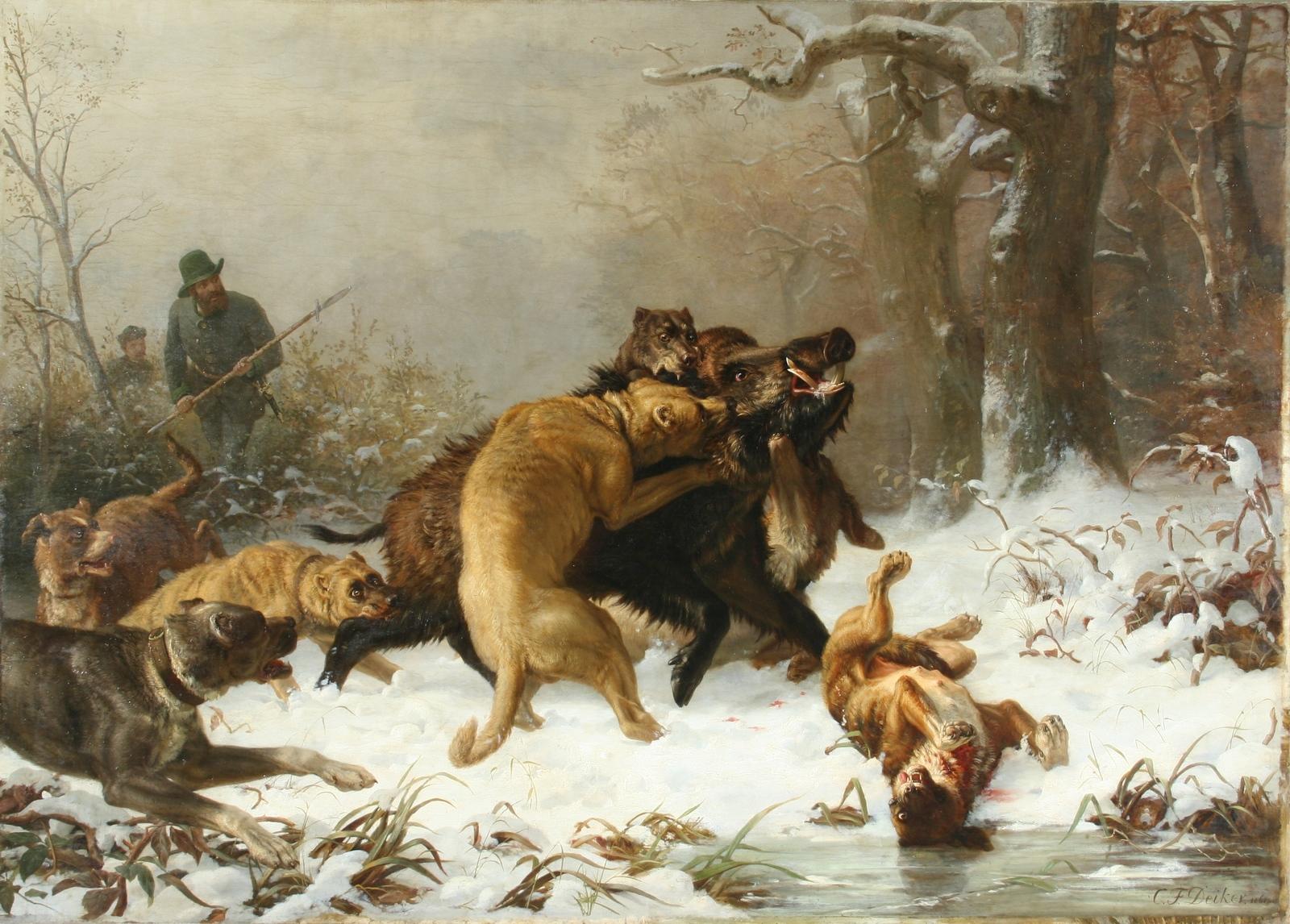Before the revolution, this magnificent large-scale painting adorned the interiors of the New Michael Palace in the center of Saint Petersburg. The noble visitors could contemplate the canvas, admiring the expression and drama of the unforgettable scene.
The owner of the palace, Grand Duke Michel Nikolaevich of Russia (1832-1909), was a representative of the most famous dynasty in Russia, the youngest son of Emperor Nicholas I, who was a serious statesman. He also had a title of the general inspector of artillery and chairman of the State Council in 1881-1905. From 1863 to 1881, the Grand Duke was the governor of the Caucasus and commander of the Caucasian army.
Michael Nikolaevich was known as a great hunter. From childhood, he and his older brothers, Alexander Nikolayevich and Grand Duke Nikolai Nikolaevich, participated in the hunts in Petergof. Later he also organized the famous hunting seasons for Emperor Alexander II.
The date of the painting purchase was planned to coincide with the end of the New Michael Palace construction in 1861. The work was meant to become part of its interior decoration. Everything in the palace reminded of the owner’s addiction to hunting: a large collection of weapons, trophies, and paintings on the hunting topic. Although the most eminent and talented masters were always at the service of the Romanov dynasty, Michael Nikolaevich actually preferred the work of the young, unknown German animal artist Carl Friedrich Deiker.
Deiker worked on the painting for two years, participating in the hunts and taking long trips. It was necessary to accurately depict t
The revolution influenced the history of the work: the first painting was transferred to the Vrubel Museum, while the second one was lost.
The owner of the palace, Grand Duke Michel Nikolaevich of Russia (1832-1909), was a representative of the most famous dynasty in Russia, the youngest son of Emperor Nicholas I, who was a serious statesman. He also had a title of the general inspector of artillery and chairman of the State Council in 1881-1905. From 1863 to 1881, the Grand Duke was the governor of the Caucasus and commander of the Caucasian army.
Michael Nikolaevich was known as a great hunter. From childhood, he and his older brothers, Alexander Nikolayevich and Grand Duke Nikolai Nikolaevich, participated in the hunts in Petergof. Later he also organized the famous hunting seasons for Emperor Alexander II.
The date of the painting purchase was planned to coincide with the end of the New Michael Palace construction in 1861. The work was meant to become part of its interior decoration. Everything in the palace reminded of the owner’s addiction to hunting: a large collection of weapons, trophies, and paintings on the hunting topic. Although the most eminent and talented masters were always at the service of the Romanov dynasty, Michael Nikolaevich actually preferred the work of the young, unknown German animal artist Carl Friedrich Deiker.
Deiker worked on the painting for two years, participating in the hunts and taking long trips. It was necessary to accurately depict t
he moments of special intensity, the beauty of nature and animals. The result was mesmerizing. He managed to create two magnificent large-format canvases with the image of baiting a boar. Influential buyers emerged. The first work was purchased by the Grand Duke Michel Nikolaevich, and the second one became a part of the collection of duke Maximilian Margrave of Bade.
The revolution influenced the history of the work: the first painting was transferred to the Vrubel Museum, while the second one was lost.



